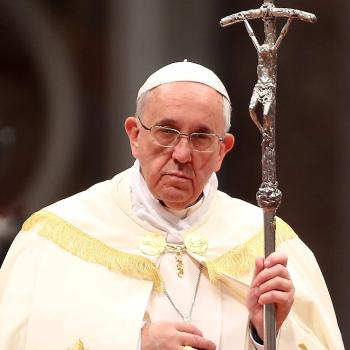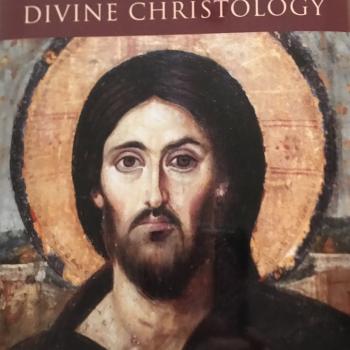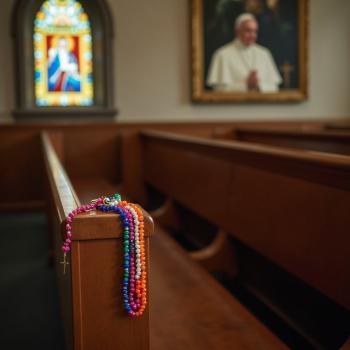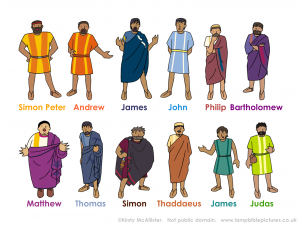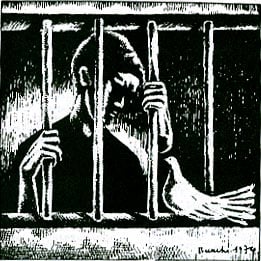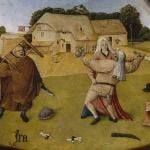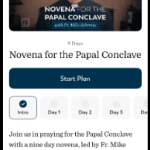
The Kingdom of God is a kingdom of equals. Jews and foreigners, rich and poor, women and men are all on equal footing. Jesus exhibits this reality. He raises the status of women and poor people. Disregarding his own status, he loses an argument with a woman foreigner.
Twelfth in a series on “The Worldly Spirituality of Mark’s Gospel” with help from Ched Myers’ Binding the Strongman: A Political Reading of Mark’s Story of Jesus. The Introduction and, looking ahead, a Table of Contents are HERE.
Diversity in the Kingdom of God
Jesus is all about healing divisions. Mark’s Gospel shows us Jesus’ concern with the divisions between Jews and peoples who were not Jews and between the poor and the rich in Jewish society. It’s a hard sell, even for Jesus’ closest followers. With the cure of the Gerasene demoniac and, especially, the two feeding miracles (see last post), Jesus works on getting Jew and Gentile together in the Kingdom. In this post we see Jesus trying to heal several divisions in Jewish society. He will challenge common notions about rich and poor, those with honor and those without, male and female, Jew and foreigner. We’ll also see the resistance he meets from enemies and lack of understanding from friends.
Of this long list of actions in these chapters of Mark (4:35-8:21), the one’s in italics are the concern here. The last post looked at the others.
- Calming the storm at sea
- Healing the Gerasene demoniac
- Curing the woman with hemorrhages and the synagogue official’s daughter
- Teaching and being rejected at Nazareth
- Sending the twelve on mission and later hearing their report (Sandwiched between these two is the account of the Baptist’s death)
- Feeding the five thousand
- Walking on water
- Arguing with the Pharisees about fasting and other traditions
- Losing an argument with the Syrophoenician woman
- Healing a deaf man
- Feeding the four thousand
- Refusing to give a sign from heaven
- Remonstrating with his disciples about loaves (again)
An honorable man loses status.
Jesus crosses the lake again and a synagogue official approaches him on behalf of his daughter. (Mark 5:21-43) This is a man of considerable honor, because he’s first a man, then head of a household, then a leader of the synagogue. He falls at Jesus’ feet, an appropriate gesture for one honorable person seeking help from another. (Myers 200-201)
Jesus agrees to help, but on the way an importunate woman delays him. She is a twice without honor. First she’s a woman, then she’s impure because of her peculiar affliction. She has suffered for 12 years with hemorrhages. Acting inappropriately, she sneaks up on Jesus and touches his cloak. Immediately she is cured of her flow of blood.
Jesus will go on to the official’s house but not until he finds out who received the “power” that went out from him. He blesses the woman. This brief incident causes him to arrive too late at his intended destination. The official’s 12-year-old daughter has died.
A more amazing miracle follows. Jesus raises the synagogue official’s daughter back to life. But that does not diminish the effect of Mark’s sandwiching technique. The important character is the woman sandwiched between the two parts of the official’s story. Mark lifts the status of the poor woman, who delayed him, above that of the synagogue official, who had to wait.
Again Mark uses number symbolism. “Twelve” represents the people of Israel. The woman (suffering for 12 years) belongs as surely the synagogue official’s 12-year-old daughter.
Jesus loses an argument.
Passing over several conflict scenes, we find Jesus in a house trying to hide; but as usual he can’t. A woman who has a daughter with an unclean spirit begs him to drive the demon out. She is “a Greek, a Syrophoenician by birth.” (Mark 24-30)
Jesus’ reply is so harsh it’s hard to believe: “Let the children be fed first, for it is not right to take the food of children and give it to the dogs.” The real shock of the incident, at least for the onlookers, is that the woman answers back: “Lord, even the dogs under the table eat the children’s scraps.”
I once assumed that the woman was humbly accepting Jesus’ insult. The daring inappropriateness of the woman’s presence, not to mention her speech, makes that highly unlikely. She deftly turns Jesus’ use of a common ethnic slur to her advantage. At this Jesus bursts out laughing. (That’s the way I imagine it.) “For saying this you may go. The demon has gone out of your daughter.”
Jesus says nothing about her faith saving her, but “for saying this,” i.e., because you stood up to me in an argument. Jesus has repeatedly shown his mastery of the art of argumentation. In fact, he had just bested some scribes and Pharisees from Jerusalem. Here Mark shows him bested by a woman foreigner. The argument with Jewish leaders was about purity laws that keep Jews separated from one another and from outsiders, like this woman. This is one of my favorite insights from Myers’ book. Jesus allows he is beaten in a game of wits and raises someone else’s status in the kingdom of equals which he is inaugurating. (Myers, pages 203-04)
The dangers of membership in the Kingdom of God
Jesus is building a kingdom in a situation of serious danger. It will include foreigners and poor Israelites on equal footing with natives and the high and mighty. This is a huge challenge to the status quo. The primary opponent is the devil, of course. As far as devil’s work is concerned, the phenomenon of demonic possession seems almost like a decoy. The devil is truly manifested in the religious, economic, and political symbols that discriminate between rich and poor, Jew and Gentile, men and women. The Kingdom of God will not be like this.
Mark stresses the danger in scenes of perilous sea crossings, in his rejection by his home town of Nazareth, and, especially, with another sandwich. The disciples are sent out on mission, exorcising and curing diseases. They come back and give their reports. But between these events Mark places the gruesome story of the death of John the Baptist. (Mark 6:6-33) It’s as if Mark is saying, “That’s how dangerous mission work for the Kingdom of God can be.”
Disciples scolded for not understanding.
Gradually building in this section is a theme which will come to full force as Mark’s Gospel proceeds. The disciples consistently fail to understand Jesus. Mark needs to make sure his community understands what the disciples in the story do not. A translation problem prevents us from seeing the point as easily as, presumably, Mark’s community could.
The disciples once more find themselves in a boat. (Mark 8:14-21) They are annoyed because they had forgotten to bring “bread.” They have one “loaf” so they didn’t forget bread completely. Jesus warns them about something that seems unrelated – the “leaven of the Pharisees and Herod.” The disciples imagine that the warning is about bread. Maybe they should be careful not to buy bread from the Pharisees or Herod?
A more useful translation
We can guess that Jesus is talking symbolically, especially as he accuses the disciples of being blind, deaf, and hard-hearted. But the nature of that symbolism is a little hard for us to figure out. A more literal translation could help. In the following re-translation (with help from Myers) notice how many times the word “loaf” or “loaves” appears. Where typical translations have “bread” I put that in parentheses:
They had forgotten to bring loaves (bread), and they had only one loaf with them in the boat. He enjoined them, “Watch out, guard against the leaven of the Pharisees and the leaven of Herod.” They concluded among themselves that it was because they had no loaves (bread).When he became aware of this, he said to them, “Why do you conclude that it is because you have no loaves (bread)? Do you not yet understand or comprehend? Are your hearts hardened?”
Myers says the key is the plural “loaves,” next to the singular “loaf.” (Myers, page 225-26) “Bread” obscures that contrast. The disciples want not just bread but loaves. Mark is writing for a diverse community that has been celebrating a ritual meal in which the primary symbol was one loaf divided and shared. This symbol told about the community’s unity in diversity. Rich and poor, male and female, Jew and Gentile have equal status.
Jesus next reviews the two miracles of feeding the multitude. As explained in the last post, Mark’s two miraculous feeding stories are rich with symbolism. That symbolism is Jewish in one story and Gentile in the other. The “leaven” of the Pharisees and Herod and the separate loaves that the disciples are crying about symbolize keeping in their separate boxes people who belong together in the Kingdom of God. In Mark’s symbolic telling the disciples enter a boat with “one loaf.” That is all they need; but they don’t understand.




